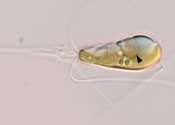Real-time imaging shows how SARS-CoV-2 attacks human cells
"What we're doing here is actually visualizing binding of the spike to ACE 2 [angiotensin converting enzyme 2]," says Kirill Gorshkov a research scientist at the National Center for Advancing Translational Sciences (NCATS) ...









